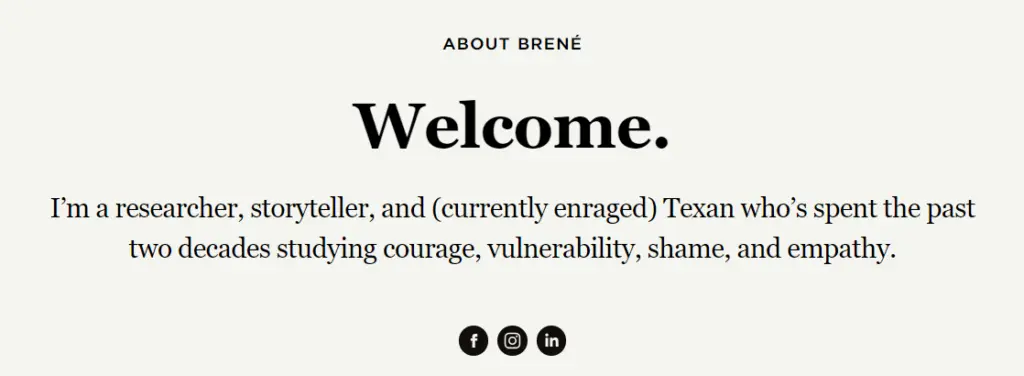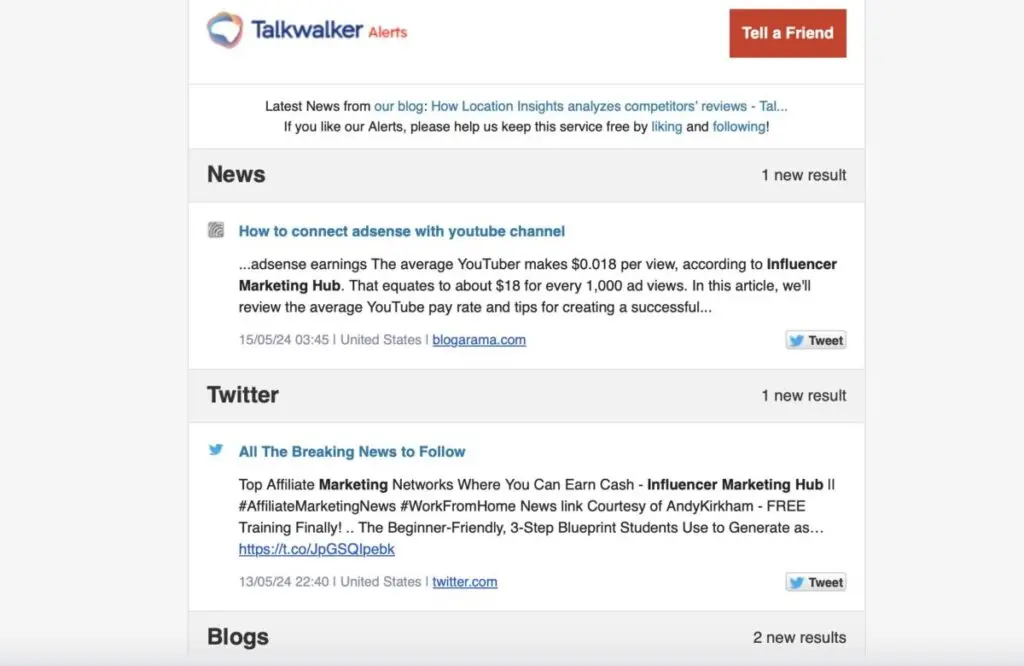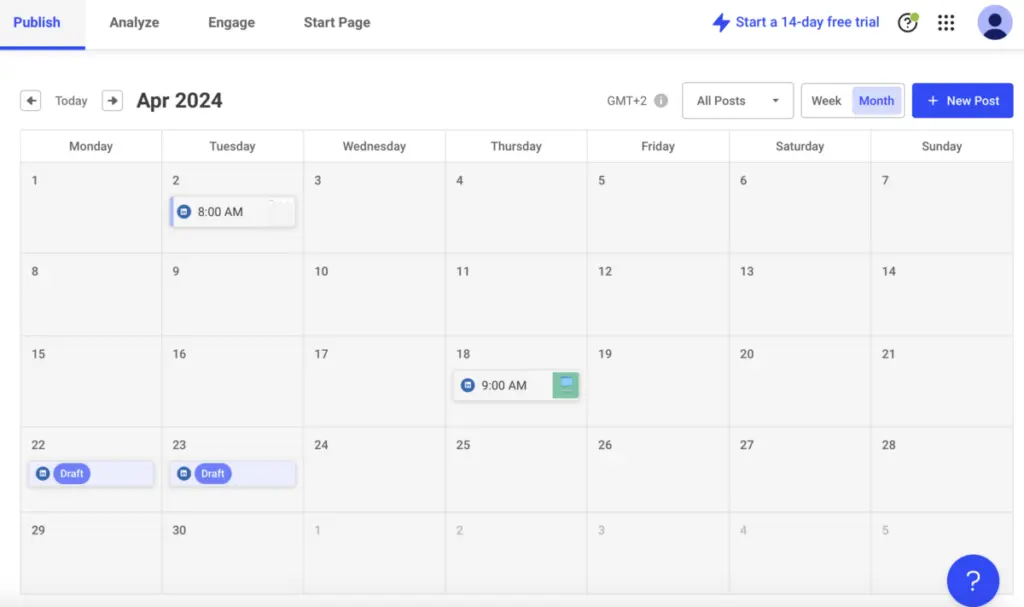You undoubtedly know what a business brand is — we refer to brands regularly whenever we discuss influencer marketing. However, the idea of having a “personal brand” is more unusual and not given the same degree of thought.
Here’s why everyone, whether you’re an entry-level marketer or C-level exec, can benefit from building a personal brand. Plus, to show you how it’s done, we’ve included some real-life examples too.
What Is Personal Branding?
Personal branding refers to how you promote yourself. It’s the unique combination of your skills, experience, and traits that you want the world to see you.
To use Search Engine Journal’s words, it’s the “public-facing identity you create for yourself”. Basically, it’s your unique, online identity, usually in a professional setting. It’s the image that people see of you online when they imagine you at work.
It can be a combination of:
- How they look at you in real life
- How the media portrays you
- The impression that people gain from the information about you available online
While it’s what you would like the world to see, it needs to remain authentic. This is one of the big challenges.
Why Is Personal Branding Important?
Personal branding is extra effort, but it becomes a valuable marketing tool. Here’s why you need a personal brand:
It sets you apart from competitors
Like with corporate branding, you can also use your personal branding to differentiate yourself from other people. It gives you the opportunity to highlight your:
- Strengths
- Contributions
- Knowledge
- Skills
- Areas of expertise
- Values
- Interests
- Passions
If you want to be considered influential, you need to create a strong personal brand.
In many ways, your personal brand is what makes you memorable. It’s your personal brand that helps you stand out from the thousands of other people like you.
If you’re working as a freelancer or consultant, this becomes even more crucial as you have no umbrella corporate brand that you can use to find clients. In this case, you’ll rely on your personal branding to present yourself to current and potential clients.
Take Whitney Blankenship, senior content marketing manager at Modash, one of the leading influencer discovery platforms, for example. She uses LinkedIn to highlight, among other things:
- Her areas of expertise (eCommerce and SaaS)
- What she values (remote work and work-life balance)
- Soft skills (adaptability and flexibility)
By quickly glancing at her LinkedIn profile’s About section, you already have a pretty good idea of which unique perspectives she can bring to the content creation process.
It benefits your company/employer
Done well, you can tie your personal branding in with your business in ways no corporate branding can possibly succeed.
As such, there has been a movement towards personalizing the main people in a business. Obviously, this is easier for a small business.
That said, it’s not impossible for large companies. Some people manage it well.
Steve Jobs used personal branding well before the phrase was even widely known to distinguish himself as the face of Apple. Similarly, Elon Musk’s personal brand is probably better known than Tesla’s corporate brand or that of X.
It’s not always to the advantage of the company, though. Take the case of Elon Musk. He often posts controversial comments and isn't shy to raise his opinion on sensitive topics like politics.
We should eliminate electronic voting machines. The risk of being hacked by humans or AI, while small, is still too high. https://t.co/PHzJsoXpLh
— Elon Musk (@elonmusk) June 15, 2024
According to a Forbes article, Elon Musk’s personal brand can actually hurt X. Musk’s conversations on X are often controversial to the detriment of the platform’s ad revenue. In the first year that he bought X, it lost more than half of its value, dropping from $44 billion to $19 billion.
That said, controversy is part of Elon Musk’s personal brand. Some love it; others hate it.
You can manage your reputation
Perhaps the importance of actively building a personal brand is best understood by explaining the alternative. If you ignore your personal brand and allow it to develop organically, there’s a chance that it can develop chaotically, beyond your control. In today’s highly digital world, every little action is discussed at length on social media. As such, you’re far less anonymous.
It helps you to connect on a deeper level
It helps people to believe they know you better, even public people who’ve never met you personally. This is key because people have much higher trust in those they feel they know.
It improves your digital marketing efforts
Search Engine Journal explains that with search engines prioritizing first-hand knowledge, a personal brand becomes an invaluable digital marketing tool. Basically, it helps to prove your experience and skills in your field, boosting your SEO efforts.
How Do You Build a Personal Brand?
To build a personal brand, you need a strategy and content. These are two of the key building blocks. Here’s how to join your strategy with your content to create a coherent and authentic brand.
1. Define your identity, goals, and target audience
For personal branding, you need to know where you come from and where you’re heading. So, you’ll need to split your brain into two.
This will require some introspection.
To start you on your journey of self-reflection, ask yourself the following questions:
- What are your unique talents?
- Which career achievements have made you the proudest?
- Which values are the most important to you?
- Are there any challenges that have had an impact on you professionally?
Don’t write down the answers you think people would want to hear. As mentioned earlier, it needs to be authentic. You want your personal brand to be trustworthy and you can only achieve that if you’re true to yourself first.
Keep in mind that it will be challenging. Most people find it extremely difficult to describe themselves, although they often find it easier to explain how they want to be. For personal branding, you need to reach the sweet spot between the two — who you are but also want to be.
Harvard Business Review suggests that you create a “through line”. In your answers to the example questions above, see if you can identify any consistent themes. Try to tie them in with your mission and goals.
Then, use your target audience to refine it further. Are you a freelancer looking to land new clients? Or are you trying to reach a bigger community of peers? Which details will be significant to them? What are their pain points?
This isn’t new. Business people have been doing this for many years, long before the internet.
Think about the image that Hugh Hefner portrayed for virtually all of his adult life. He probably never heard of personal branding, yet he let himself become the face of the Playboy empire and lived the lifestyle that the readers of his magazine envied. He could not have lived his type of lifestyle, however, if he helmed a more conservative company, targeting more politically correct customers.
Ultimately, you want to build a reputation as somebody who cares about the types of people who make up your potential and existing clients. It's crucial to find, listen and engage with your potential clients.
2. Write a personal brand statement
You need a personal brand statement to differentiate yourself. It will also help to keep your communication consistent — remember, your personal branding won’t live on just a single social media network.
Search Engine Journal suggests that your personal brand statement covers the following four areas:
- Who you are
- What you do
- Who you serve
- Why it matters
Harvard Business Review also identifies four areas that you need to cover in your statement (or value proposition as they call it). They also include your target audience, but phrase the other three areas slightly differently and suggest that you focus on:
- What you hope to provide
- Your competitive cohort
- Your distinctive capabilities
Brené Brown, a researcher and motivational speaker who covers topics like how to be your authentic self, serves as a great example of how to keep it simple and honest.

Source: brenebrown.com
3. Audit and optimize
Nowadays, you can’t ignore the importance of social media. Part of your personal branding should include having social media accounts on all of the social networks where your audience spends their time.
Go over all your existing profiles to ensure that they’re professional and in line with your personal branding. This applies to platforms like Facebook and Instagram that are mostly social too. Search Engine Journal refers to this step as updating “your digital footprint”.
Remember, you can delete old posts. There’s nothing wrong with that. It’s not about trying to sweep something under the rug, but rather ensuring that the image you want to create is done so consistently to improve brand recognition.
If you want to use social media sites like Facebook and Instagram for interacting with friends and family, you should consider setting up a separate profile in a different name for this. You’ll want to accept friend requests freely and, as such, the solution isn’t simply to set your accounts to private.
While you’re at it, think about other elements that are typically used by corporations in their branding kit like:
- A color scheme
- Typography
- Logo
- Professional headshots
Try to use the same color scheme, fonts and possibly even profile picture across all your social media platforms. This helps with brand recognition.
For example, Ann Handley, one of the leading digital marketing voices, uses purple in her website design and LinkedIn profile.
Then, on X and Facebook, she opts for orange.
I can’t wait to see my fin-serv marketing friends in NYC in a few weeks! After a few virtual programs… gonna be awesome to see you all IRL. Join us! ??? https://t.co/aRjjTQIPUB pic.twitter.com/Vgr6SXhkmi
— Ann Handley (@annhandley) October 13, 2022
The use of purple on some channels and orange on others create enough consistency.
This exercise of auditing and optimizing your social accounts will also help you to take stock of your personal brand’s current value.
How would you rate your brand awareness? Just because you have thousands of followers on LinkedIn doesn’t mean they know who you are.
What’s your current brand sentiment? Positive, neutral, or negative?
You can take this step offline too and ask someone in your network to give you feedback on your weaknesses and strengths. Keep the questions open-ended and phrase it like:
- How would you describe me to your boss?
- Which words would you use to describe me professionally?
- What stands out about my personality?
4. Create content
To let your brand reach your target audience, you need to post relevant content regularly. It will also help to establish yourself as an authority and thought leader in your niche.
It should take a professional, yet personal approach. Cynical consumers see businesses as being all about selling. The whole purpose of personal branding is to step back and deemphasize selling.
Also, you shouldn’t just post for the sake of posting. Take Whitney Blankenship’s approach to building a personal brand again. She explains in one of her LinkedIn posts:
“I didn’t go crazy and post just to post, but I posted when I had something to say. I posted when I saw something that resonated with me. I posted when I had value to add — be that in conversation, resources, data, etc.”
It’s a matter of consistency over frequency. This is not just behaving consistently in a way that matches your portrayal – although that is important. It also includes factors more reflective of business branding like your color scheme and fonts.
As mentioned earlier, you’ll want to use these types of elements consistently in your social media banners. However, it can also be applied to the actual posts.
For example, on a platform like Instagram that’s inherently visual, Neil Patel, one of the best personal branding examples, consistently uses orange, the same font, and post layout.
Which Tools Can Help With Personal Branding?
Brand mention tools can help you to monitor mentions of your name, be present and responsive 24/7. Examples of tools that you can check out include:
For example, with Talkwalker Analytics, you can monitor your name for online mentions. Once set up, you’ll receive daily email notifications with a list of news sources, blogs, and social media platforms where your name has been mentioned.
You can then use this information to acknowledge the mention. If it’s positive, you can thank them. If it’s negative, you can do some damage control.
You can also repurpose these mentions as part of your own personal branding marketing.
Aside from brand monitoring tools like these, you can also add a design tool such as Canva and a social media management platform like Buffer to your tech stack. Both these tools have a comprehensive free plan, making it ideal for individuals.
Aside from the hundreds of templates that Canva offers, it also includes a useful Brand Kit. Here, you can save your color scheme, fonts, and other elements to keep your branding consistent.

Source: canva.com
You can then use Buffer to schedule social media posts that you’ve created with a tool like Canva. It offers an intuitive, drag-and-drop calendar, especially useful for filling up your content calendar.
Offline Personal Branding: Is It Still Relevant?
Don’t forget the offline world. Your personal brand needs to encompass all the places where your customers could encounter you. Old-style business cards are just as crucial to your branding, as your social pages are. Just remember to keep your theme consistent on these too.
Carry business cards with you wherever you go. This is as relevant now as it was forty years ago. Take out a card whenever you see the opportunity to network with somebody new who matches your target audience.
Ideally, you will want your personal branding to encompass all of your public life. So this even covers how you dress whenever you are in a public situation. You want your whole public image to match the persona of your personal brand.
You might even go as far as buying a car that fits your preferred color scheme and wearing appropriately colored ties or other clothing to any public event you attend.
Key Takeaways
The secret to successful personal branding is an underlying consistency. You are trying to establish an external depiction of “you”. This means that you need to act consistently with that depiction.
Above all else, though, you do want your personal brand to be authentic. Sure, it may mean having to ignore a few of your personal warts. You may have to massage it a little to match your target audience's perceptions, but it needs to sound genuine. It is not hard to spot a fake person.
You want your personal brand to match what people say about you when you are not around. If people don’t believe your personal brand, then you face a distinct lack of credibility.
Frequently Asked Questions
What are the top tips for personal branding?
To build a stronger personal brand, you should:
- Create a personal brand persona
- Identify a specialty that makes you even more unique
- Create an interesting bio
- Infuse your personality into your content
- Create your own website or start a personal blog
What are the rules for building a personal brand?
The following are important when creating a personal brand for yourself:
- Know your core values
- Be authentic and sincere
- Narrate a story
- Apply it consistently across different channels
Which are examples of good personal branding?
The following celebrities all serve as great personal branding examples:
- Leonardo DiCaprio
- LeBron James
- Oprah Winfrey
- Ellen DeGeneres
- Mo Farah
How do you manage your reputation online?
It’s best to work with an online reputation agency or use a tool. You can, for example, check out an agency like NinjaPromo, Thrive Internet Marketing Agency, or Go Fish Digital. As for tools, you can use Brandwatch, Brand24, or BrandMentions.






